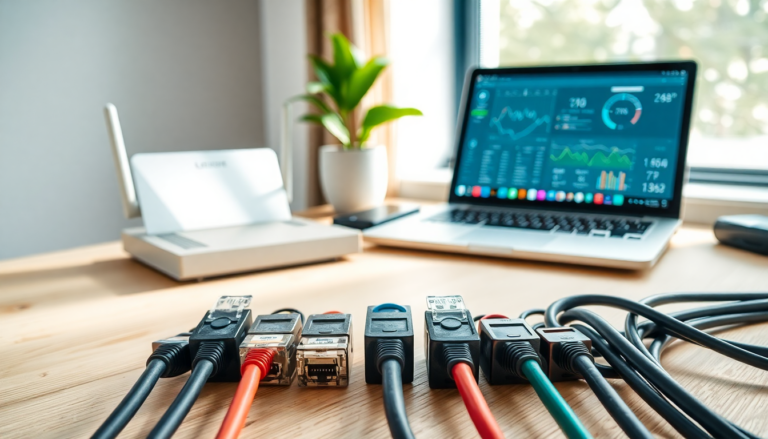Argomenti trattati
About a week ago, a revelation hit me: I would never buy another Ethernet cable again. Sounds dramatic, right? But I found myself buried under a mountain of tangled wires, each with varying degrees of capability. My Ethernet collection was a chaotic mix of colors, and I had no clue which cables were actually fit for purpose. I mean, who really knows how much data those cables can handle? It turns out, ignorance about your network setup can be costly, both in terms of speed and money.
Understanding Ethernet cable categories
It wasn’t until I started experiencing frustratingly slow internet speeds that I realized something had to change. After all, a network is only as fast as its slowest component. I had been casually running speed tests, all the while knowing deep down that my ancient cables might be the bottleneck. I stumbled upon an old Cat5 cable connecting my Xbox, which, let’s be honest, is about as outdated as dial-up internet. Yikes! If my ISP had upgraded my broadband speed, I was essentially throwing that benefit away by using inferior cables.
Then came the enlightening moment when I dove into the world of Ethernet cables. There are various categories, ranging from the prehistoric Category 3 to the futuristic Category 8. As I learned, different categories can support different speeds and data rates. Category 8, for instance, boasts a whopping 40 Gbps capacity, which is mind-blowing compared to what I had been using.
The price of performance
So, how much does a top-notch Category 8 cable cost? To my pleasant surprise, it’s not much at all. I found a five-pack of color-coded, nylon-braided Cat8 cables on Amazon for just $26.99. That’s less than the price of a decent meal! Realizing that upgrading my cables could significantly enhance my network’s performance—and for a modest investment—was a no-brainer.
Broadband technology is constantly evolving, and service providers are continuously pushing for faster speeds. Even the most advanced cable modems can only deliver a few gigabits per second, so it’s crucial to ensure that your cables aren’t the weak link in your setup. I remember when I invested in a high-speed modem, only to wonder why my internet still lagged. Now I know: it was the cables!
Making the switch
After my research, I quickly ordered those shiny new cables and swapped out the old ones. What a satisfying moment that was! I felt like a proud parent watching their child grow up, only in this case, it was my network. I decided to tackle my tangled mess of wires, and it felt liberating to finally have a clean setup. No more guesswork about which cable was which; now I had color-coded clarity!
But it’s not just about aesthetics or organization. Upgrading to Cat8 cables has transformed my online experience. Streaming, gaming, and even simple browsing have become smoother and faster. I’ve noticed a significant decline in buffering times and an overall boost in responsiveness. Suddenly, my network feels like it’s on steroids.
Reflecting on the journey
As I reflect on this little adventure, I can’t help but think about how easy it is to overlook the basics. When we focus on things like getting the latest gaming console or a sleek new router, we often neglect the foundation—our cables. It’s like building a house on sand. You might have fancy furniture, but if the foundation isn’t solid, everything crumbles.
In my experience, investing in the right cables has paid off. I’ve saved myself the headache of troubleshooting slow speeds and worrying about whether I’m getting the most from my internet service. So, if you’re still using outdated cables, I’d say it’s time to rethink your approach. After all, why settle for less when a simple upgrade can make a world of difference?

